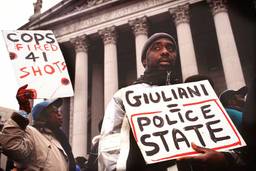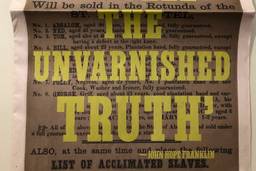Among the questions raised by the spiraling scandal of U.S. abuse at Iraq’s Abu Ghraib prison is this one: Why so many pictures? Seymour M. Hersh’s May 10 New Yorker article first revealed the horrendous treatment of Iraqi detainees. But the accompanying photographs are what lit the public bonfire beneath the issue of detainee abuse.
Why would a bunch of Army MPs document such abusive (and indictable) behavior? Apparently they had little if any fear of consequences. The smiles and triumphant poses of the male and female GIs in the photos certainly don’t indicate shame.
The photos’ conspicuous emphasis on sex and nudity seemed specifically intended to outrage Islamic sensibilities. Incredibly, those sophomoric expressions of cultural hostility were encouraged by those higher up in the chain of command, according to Hersh’s May 24 New Yorker piece. Hersh reports that Defense Secretary Donald Rumsfeld personally approved the expansion of a “secret operation, which had been focused on the hunt for Al Qaeda, to the interrogation of prisoners in Iraq.” This operation reportedly allowed abusive interrogation methods of prisoners, including sexual humiliation. Hersh writes, “It was thought that some prisoners would do anything —including spying on their associates — to avoid dissemination of the shameful photos to family and friends.”
But the jocular attitude that accompanied this abusive behavior reveals more than just a dedication to grim duty. These American GIs may have been pushed to humiliate the Iraqis, but they took to their task with considerable relish. Their disdain, openly conveyed by a choreography of cultural contempt, has a peculiar historical resonance.
“Clearly these are a people with very racist intents. But it does certainly play on the stereotypes and the dark humor that underlies this type of racial oppression. If you can take it lightly, it’s much easier to institutionalize it,” said Monique Guillory, a professor at Jackson State University who coordinated an exhibit called “Without Sanctuary” that showcases photographs of lynchings in the United States from 1882 to 1981. The exhibit has been shown in New York City and Atlanta and currently is housed at Jackson State University in Jackson, Mississippi.
Guillory was referring to the lynching photos, not Iraq, when she made that comment to Scott Simon, host of National Public Radio’s “Weekend Edition” on May 8. But I heard definite similarities.
“It’s amazing and curious to consider why people who participated in the humiliation and hanging of a human being would want to photograph that crime and send the picture through the mail,” said Simon, struck by the smiles on the faces of the crowd. “There’s no sense of shame, chagrin.”
Guillory agreed. “That’s one of the things that strikes people most about the images is the comfort, the ease of the crowd.” Ironically, she said, “it was precisely through the sadistic nature of the act and the murderer’s desire to revel in it” that atrocities were revealed that otherwise would not have been documented.
The lesson of the images in “Without Sanctuary” and of Abu Ghraib prison abuse is not that they reveal the depravity of American whites at home and abroad, but that we are all capable of horrendous acts toward demonized “others.”
The Western demonization of Arabs, and of Muslims in general (a process the late scholar Edward Said termed “Orientalism”), has allowed Americans to conflate Osama bin Laden and Saddam Hussein with all the nefarious Muslim stereotypes roaming the American imagination — from Ali Baba and his 40 thieves to the Caliphs of the Crusades.
Part of the blame for the abuse of prisoners connected with the “war on terrorism” lies in the process of othering. Othering also explains the similarities between treatment of the Iraqi detainees and America’s perennial “others” (and largest prisoner population), African Americans.
In fact, a member of a U.S. team charged with reconstructing Abu Ghraib was a man named Lane McCotter, who resigned as director of the Utah Department of Corrections in the wake of an abuse scandal. What’s more, two of the reservists accused of abuses were former corrections officers at U.S. prisons troubled by accusations of prisoner abuse.
For those who would argue that African Americans and other Americans of color are not “others” but full-fledged Americans, let me offer President Bush’s very words on this matter. Appearing in the Rose Garden with Canadian Prime Minister Paul Martin, Bush, apropos of nothing, said the following to the gathered press: “There’s a lot of people in the world who don’t believe that people whose skin color may not be the same as ours can be free and self govern. I reject that. I reject that strongly. I believe that people whose skins aren’t necessarily — are a different color than white can self-govern.”
Nuff said.
Salim Muwakkil is a senior editor of In These Times and host of “The Salim Muwakkil Show” on radio station WVON-AM in Chicago. Muwakkil was also contributing columnist for both the Chicago Sun-Times (1993 – 1997) and the Chicago Tribune (1998 – 2005). He is also a co-founder of Pacifica News’ network daily “Democracy Now” program and served as an adjunct professor at Northwestern University, University of Illinois, the Art Institute of Chicago and Chicago’s Columbia College.









